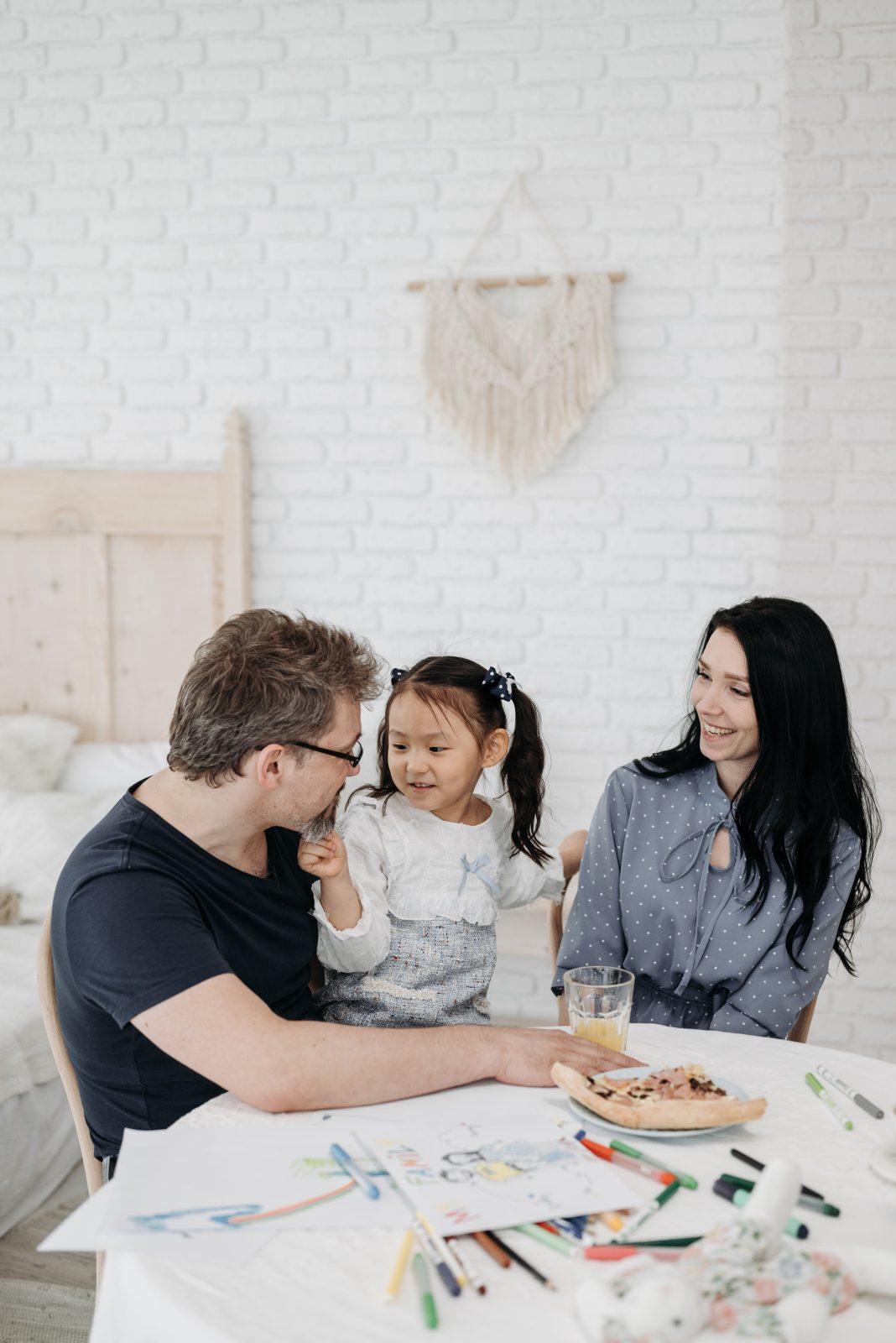Being able to communicate with confidence is a lifelong skill — but it takes time to build. You might be surprised to hear that many kids struggle with communicating, and these challenges manifest uniquely in each child.
While some kids struggle to communicate their feelings and thoughts, others may develop a speech delay, find it difficult to process what others say, or suffer shyness when speaking to others.
With a little bit of guidance, you can help give your little one the proper tools to become confident communicators. Truthfully, home-based instruction and supportive environments are fundamental in nurturing lifelong confident communication skills in kids. Because, as we all know, the most important lessons and growth usually start at home.
The importance of nurturing confident communication skills in kids
Communication is way more than what we say. It involves how we move, behave, and interact with others. How we communicate tells others a lot about us. Here are just a handful of the benefits that confident communication skills in kids:
- Getting across and communicating our feelings and thoughts means we can engage with our peers.
- With confident communication, we can engage in collaborative learning.
- You can communicate more efficiently, saving time and energy.
- Expressing opinions allows us to advocate for our beliefs and ourselves, promote fairness, and contribute to society.
- Being aware of body language and non-verbal cues enhances our ability to understand and connect with others, deepening our interpersonal relationships.
- Being understood by others helps build self-esteem and self-assurance.
- Communication skills in kids helps when resolving conflicts and builds resilience.
- Effective communication is important for professional settings, improving relationships, and job prospects.
- Confident communicators are likelier to be great leaders, inspiring and motivating others.
Tips for encouraging confident communication skills in kids
It’s pretty clear that building confident communication skills in kids is important. But sometimes it can be difficult to incorporate it. As with any habit, it needs to become routine. As parents, paired with everything else that we do for our kids, that can be hard. But with these tips we’re confident that you’re be able to instill confident communication skills in your kids:
Build vocabulary with a play-based approach
Children love games, so why not use playtime to build confidence?
“Listen and draw” is one of my absolute favorites, as it works on effective communication, following directions, and creativity at once. All you need is a piece of paper and a pen or pencil. One person is the teacher, and the other is the artist. The teacher is going to tell the artist what to draw on their paper and where — just a warning, it can get quite silly! For preschoolers, you can print off a simple picture drawing and instruct them to color in the drawing instead. Swap roles and see what being both the artist and teacher is like.
Word association games are also super fun! One by one, each player has to say a word that’s associated with the last one. For example, if someone says train, the next player might say airplane, as it’s also a form of transportation. You can make it more challenging by introducing categories, giving time limits, or using a word finder to generate words and make it more playful.
The idea of a play-based approach is to get kids comfortable speaking and enhancing their vocabulary while having a blast!
Embrace active listening at home
I’m sure you’ll agree that you’ve been in situations where what someone has said and what you’ve heard don’t match up! Maybe a lack of active listening was the issue. Active listening is about listening on purpose. The first half of this important skill is preparing ourselves to listen and give full attention to what someone tells us verbally and non-verbally. The second is about providing the person with comments, non-verbal cues, or feedback to show you were listening.
You can nurture good active listening skills at home by encouraging the whole family to model and use them. Here are some whole family-friendly active listening exercises to try at home:
- Be specific when you give feedback. Instead of saying “well done” or “great job,” actually tell the other person what they’ve done. For example, “I can see that you painted a pretty picture,” or “I can tell you’re excited about that.” Using less generic phrases will show you are paying attention.
- Communicate boundaries. Another way to be intentional about communicating and practice active listening, is to tell the other person when it’s not a good time to talk. For example, if you’re in the middle of doing something important, maybe you don’t have the time to give them your undivided attention. Instead of trying to listen and everyone getting frustrated, tell them when is a good time. For young children, a simple clock or timer will help them know when the right time is. You can practice this with the whole family and encourage your kids to do the same. Just make sure you stick to your word and give them your full attention when you said you will.
- Work on your non-verbal cues. Show your child the power of non-verbal cues and model them whenever possible. Often, what our faces say is more important than what our words do. Facial expressions, like smiling, eye contact, tone of voice, and the power of silence, are all non-verbal cues that we naturally pick up on. If you struggle with non-verbal cues yourself, you can work on them with your child. Role-playing situations where you may have to practice active listening, mirroring games, and mindfulness exercises can really help with this, plus they reduce anxiety and build confidence.
Encourage your child to express themselves
To nurture confident communicators, a supportive home environment is key. You can give your child moments to express themselves freely in many ways. Consider organizing a weekly family catchup where you talk informally about things going on in the household. The most important part of an informal chat is creating an environment where everyone feels free to let things off their chest without judgment. Being able to discuss and label our inner feelings doesn’t happen overnight; many people struggle to do it. You could print off something like a feeling wheel and stick it on the refrigerator for the whole family to use.
Model conflict resolution
Conflicts are a part of life, and living without them is impossible. However, conflicts don’t have to be the end of the world. They can be a great learning opportunity and help your child confidently discover their voice and the power of the words we say. You can teach your children how to resolve conflicts and communicate their needs in many ways. One Montessori-inspired activity is a conflict-resolution table. A neutral space where children (and adults) can discuss problems, talk about them, and resolve them independently. Here are some conflict resolution conversation prompts they can lead with that start with “I.” You could even print these off and keep them close by.
-
- I felt angry when …
- I wasn’t happy when …
- I didn’t like the way that…
- I feel like …. when…
Consider signing them up for a theater class
For kids who struggle with shyness, theater can be a great tool to improve confidence. An informal theater class can be a safe and supportive environment for children to step out of their comfort zone to express themselves and build confident communication skills in kids. In many theater classes, children take on roles and experiment with different personas and personalities, significantly boosting their confidence and empathy for others. At the same time, kids who struggle with public speaking might benefit from repeated exposure through performing in a safe place.
Nurturing a generation of confident communicators
By giving your child the tools to develop their voice, you’re gifting them a vital lifelong skill. Communication is about body language, listening, and self-expression. So, by implementing some of the tips in this article, you’ll hopefully get closer to that ultimate goal of having children who communicate freely and effectively with confidence.
Let’s nurture a generation of confident communicators and help them find their voice and shine
Further resources in the Central Florida area
There’s a wide range of resources accessible in the Central Florida area. However, it’s important to note that the Orlando Mom Collective is not connected or affiliated with any of the following organizations and companies.
- The Confident Communication Center – https://confidentcommunicationcenter.com/
- Central Florida Community Arts – https://cfcarts.com/
- Easterseals SLP – https://www.easterseals.com/necfl/
- Grow and Sing Classes – https://www.growandsing.com/





















